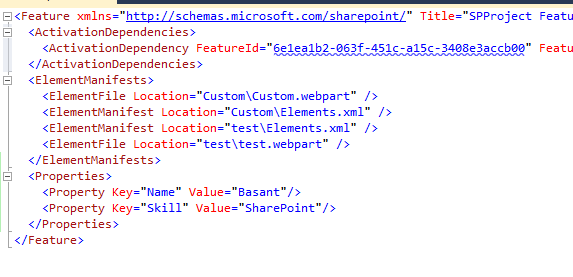Understanding SharePoint 2010 Features

What is SharePoint Features? Definition Taken from Microsoft Site http://msdn.microsoft.com/en-us/library/ms460318.aspx Features in Microsoft SharePoint Foundation reduce the complexity involved in making simple site customizations, and they are robust when upgrades are applied to a deployment. Features eliminate the need to copy large chunks of code to change simple functionality. Features thus reduce versioning and inconsistency issues that may arise among front-end web servers. Features make it easier to activate or deactivate functionality in the course of a deployment, and administrators can easily transform the template or definition of a site by simply toggling a particular Feature on or off in the user interface. Other Words you Can Say Feature is Feature are Primary Deployment for SharePoint Feature denied in xml (CAML) Feature contains two files feature.xml, element.xml Feature scope Farm, Web Application Site level Allow .Net Cod...

